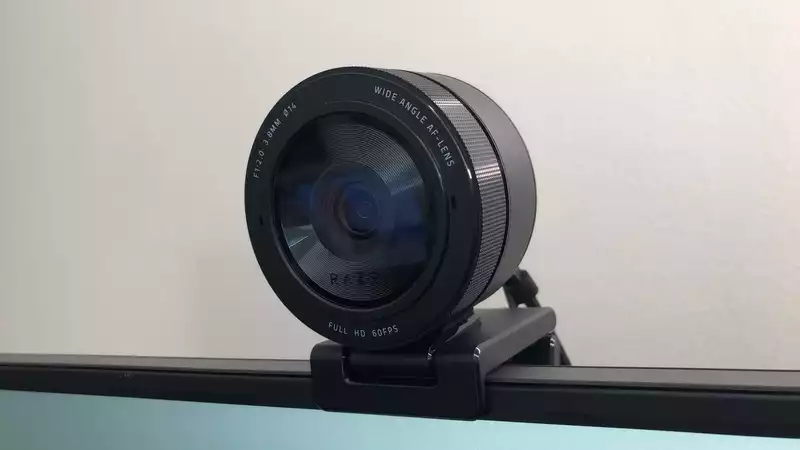Most streamers will tell you that one of the hardest things about streaming, next to setting up the audio, is proper lighting. Not everyone has the space to mount a key light from the ceiling, or to put a giant ring light on their desk. But the Razer Kiyo Pro aims to be the killer picture, no matter how badly lit your streaming cave is, so here's hoping there might be an answer.
The original Kiyo was released in 2017 and garnered a lot of attention at the time by integrating a small ring light into the webcam itself. While this solution provided some relief to darkroom streamers, the quality of the camera left much to be desired, and we are back to square one.
The new Kiyo Pro improved on the previous one with a slightly different approach to handling lighting in dark spaces. Gone is the ring light and in its place is an advanced light sensor to deal with darkness.
Frankly, eliminating the ring light was a good move for Razer. Even in dark environments, the ring light never felt bright enough to actually improve shooting, and the ring light itself was often more distracting than helpful.
Other improvements in the Kiyo Pro include HDR (off by default), 1080p resolution (60 fps), wide-angle lens, and omni-directional microphone. It is a feature-packed webcam for streamers.
As you can see in the video and photos below, the light sensor helps a lot compared to the popular Logitech StreamCam, its closest competitor in terms of specs. You will notice that the abundant light coming through the windows during the day blows out almost half of the photos taken with the Stream Cam almost completely, whereas the Kiyo Pro manages to adjust on the fly. Admittedly, the contrast is a bit stronger.
Nighttime and dark rooms are where the Kiyo Pro truly shines (pun absolutely intended). You can see how the Kiyo Pro compensates for low-light environments, and the Kiyo Pro may be the best low-light webcam I've used in years. Even with very little light, it illuminates me and my background well enough to make the camera usable.
The wide-angle lens does show more of the background, but if you look closely at some of these photos you can see a fisheye lens-like effect. Thankfully, you can switch to a lower FOV.
Autofocus on the Kiyo Pro seems to be one of the more annoying issues with webcams. During meetings, calls, and even while recording test videos, it was frequently out of focus. So much so that I had to switch to manual focus using Synapse 3 software. The camera would somehow lose me and not know what to focus on. This is odd and hopefully a bug that will be fixed in a future firmware update.
Kiyo's default image settings are also frustrating, especially for people like me who work in less than the best streaming environments. At one point, everything was too dark and the contrast was too strong. I mentioned earlier that the Razer Synapse app allows you to customize the Kiyo Pro's camera settings, and a few simple sliders for brightness and contrast can greatly improve the Kiyo Pro's underwhelming default camera settings.
Nothing is as powerful as the Logitech Stream Cam's quirky filters, but there are several presets from Cool to Warm. If you want to get more elaborate with your camera settings, you may want to tweak them with third-party recording software like OBS or xSplit; I didn't like Razer's Synapse software much, and was surprised at how easy it was to tweak my shots. [For example, HDR is off by default and must be turned on from the Synapse 3 app. Also, it would have been great if there was a way to quickly switch FOV or switch from autofocus to manual focus without having to go into the software.
The Kiyo Pro also comes with an omni-directional microphone. My microphone test script also picked up fairly crisp and clear audio, but picked up a lot of background noise, like a desktop PC Razer currently makes one of the least expensive microphones available.
The Kiyo Pro feels like a necessary maturity over the original Kiyo webcam, which often felt like a novelty in its design; the Kiyo Pro is happy to address a common problem with many webcams: uninspiring lighting environments. While some may miss the ring light, I would be willing to lose it for the overall improvement in image quality.
At $200, however, the Kiyo Pro is one of the more expensive non-4K webcams available today. With enough tweaking, you can get the most out of this webcam, but it's not a natural for every situation, and the autofocus issue is a real pain. It may be perfect for those who want a stream but can't afford or afford to set up studio lighting for the best shots, but it's still not the ultimate webcam solution.
.

Comments